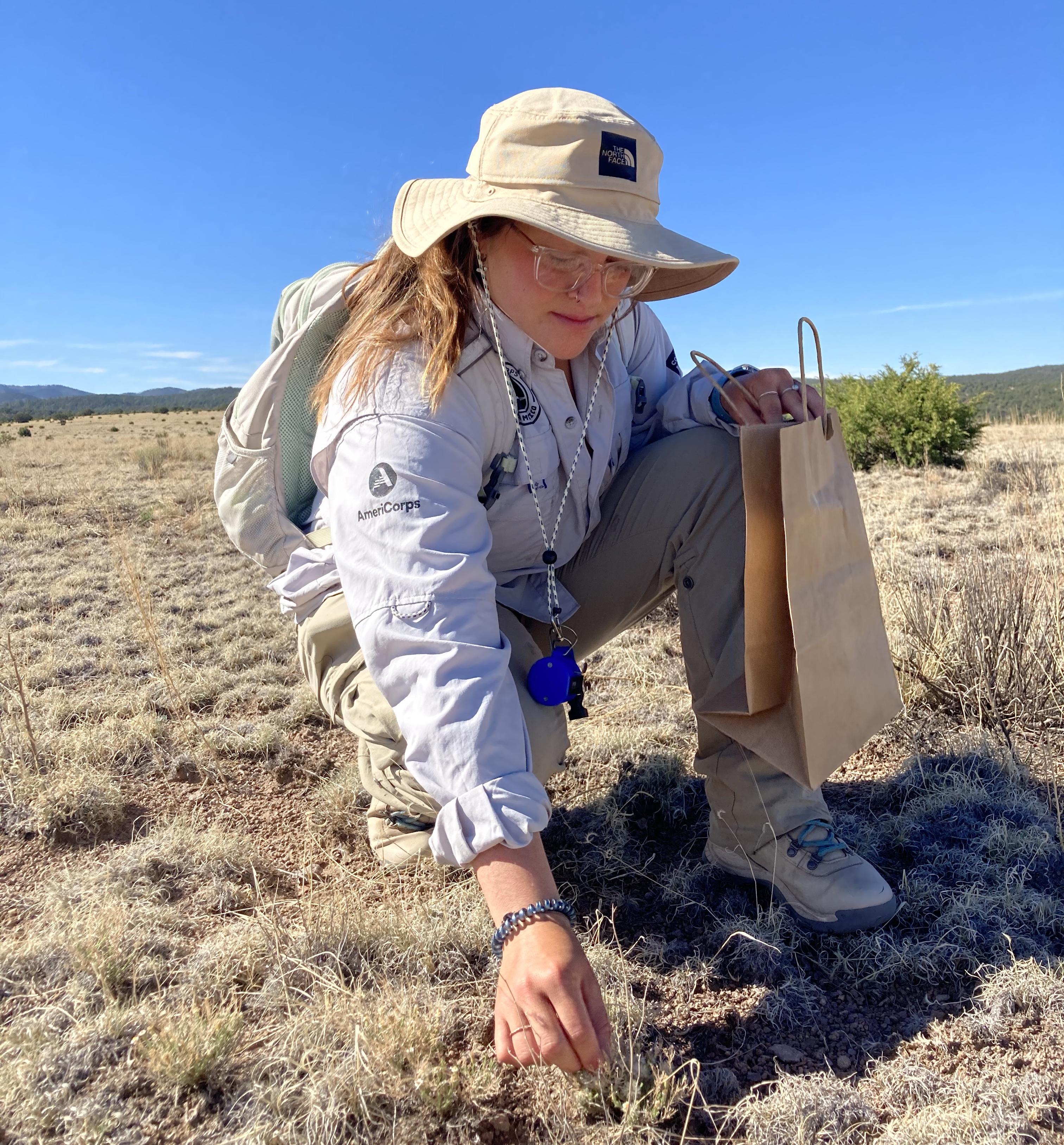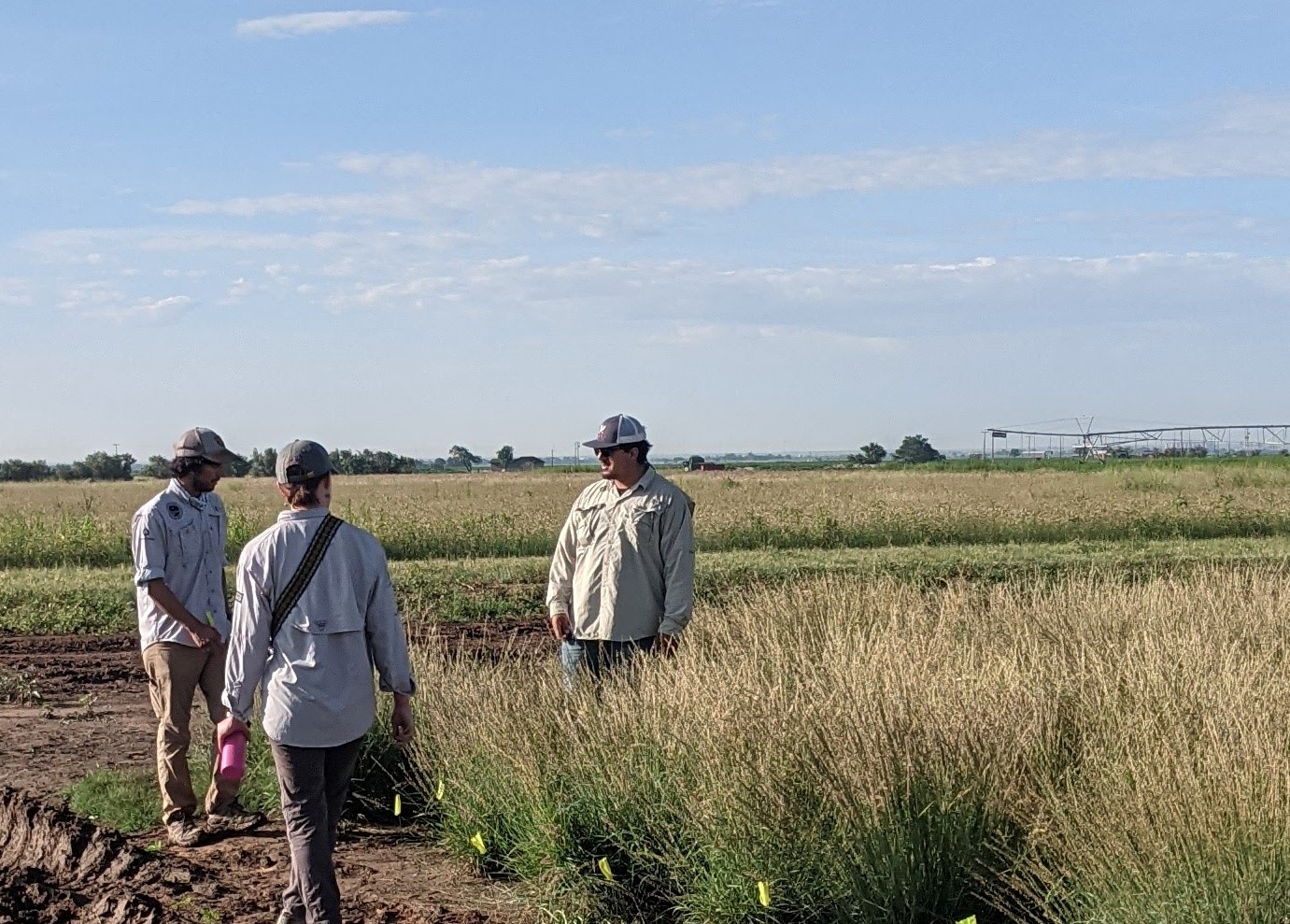
From Home on the Range to Home on the Farm: Tracking the Genetic Identity of Seeds through the Plant Materials Cycle
By Ashlee Wolf
April 2022
Each year, the Southwest Seed Partnership works with partners to collect native plant seed from wild populations. This is the humble first step in the plant materials cycle, the process of producing native plant materials (seeds and nursery-grown plants) for restoration of degraded ecosystems. Throughout all steps of the plant materials cycle, we take care to preserve the genetic diversity found in wild collected seed. In partnership with the U.S. Geological Survey (USGS) and the New Mexico Bureau of Land Management (BLM), we are working to study the effectiveness of our methods and inform our approach to increasing the availability of locally-adapted native plant materials.
The plant materials cycle can be broken down into 5 broad steps, each with unique ecological considerations and implications:
- Wildland seed collection
- Cleaning, processing, and storing
- Accession building - combining seed from multiple wild collections within a defined area
- Agricultural field production
- Nursery production and/or restoration seeding
We grow seed in agricultural settings because wildland collection alone cannot supply enough seed to meet the demand to restore degraded areas. Traditional methods of growing native seed typically involve using a single source (seed collected from one place and time). Alternatively, the method IAE and many others are increasingly applying involves combining several sources of seed collected from wild populations across a larger area. This combined source method is thought to help increase resilience to environmental change. This idea of increased resiliency is based on sound scientific logic– seed resulting from combined sources may have more genetic variation, like having more tools in a toolbox, likely meaning the population will have genetic material, and resulting physical or physiological traits needed to survive disturbances like drought. However, there have been few opportunities to test this logic and there are still lots of questions to be answered. Are each of the sources originally mixed together still genetically present in the final batch of seed? Do these combined source seeds really do better than single source cultivars in restoration? The Institute for Applied Ecology Southwest Office has been partnering with the USGS and New Mexico BLM to initiate research and answer some of these questions.
In 2021, crews working with the New Mexico Bureau of Land Management collected genetic tissue samples (snips of green leaf material preserved in silica powder in a plastic bag) from every source population where seed for production fields was originally collected. Additionally, the crews collected tissue samples from the agricultural fields at Bamert Seed Company in Muleshoe, TX, where the same wild-source seed was later grown out. Here the crews collected tissue samples from plants in agricultural fields that were planted with seed from those same wild source populations. These samples will be analyzed to determine their genetic identity, using DNA markers that help identify unique populations. By comparing the genetic identity of the wild sources to what is growing in the agricultural field, we will be able to track which sources were successful in the field and what proportions of the original wild seed’s genetics are still present in the field. Armed with this information we will be able to tell if our efforts to maximize genetic diversity are effective through the seed production step of the plant materials cycle, and if these efforts are worth continuing.
The next steps will unfold over several years and include studying the physical traits of plants grown from both wild-sourced seed and farm-grown seed and how they relate to “success” and ecosystem services in greenhouse and restoration settings. All of this information will give us a better understanding of how to strategically combine wild sources, how agricultural practices in native seed production might contribute to restoration outcomes, and how to ensure we are producing seeds that will be resilient in a changing climate.
We thank our funders and sponsors New Mexico Bureau of Land Management and U.S. Geological Survey. A U.S. Department of Agriculture, Agriculture Food and Research Initiative (AFRI) grant awarded to USGS will support this project over the next four years.
Restoration
Research
Education
Get Involved
Contact
Main Office:
4950 SW Hout Street
Corvallis, OR 97333-9598
541-753-3099
info@appliedeco.org
Southwest Office:
1202 Parkway Dr. Suite B
Santa Fe, NM 87507
(505) 490-4910
swprogram@appliedeco.org
© 2025 Institute for Applied Ecology | Privacy Policy


